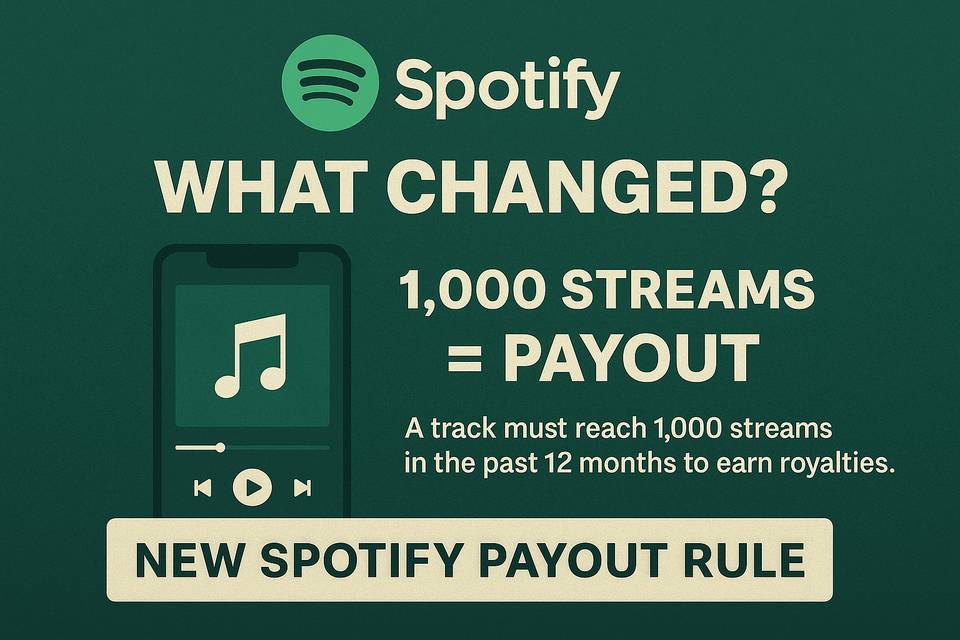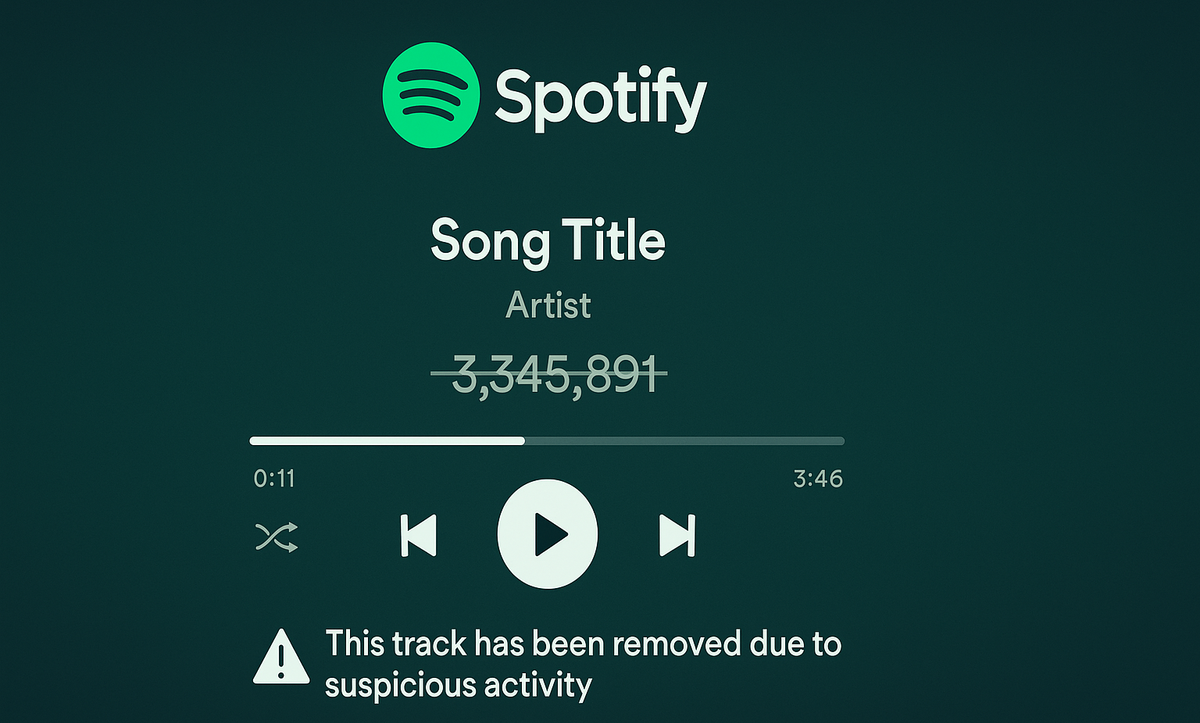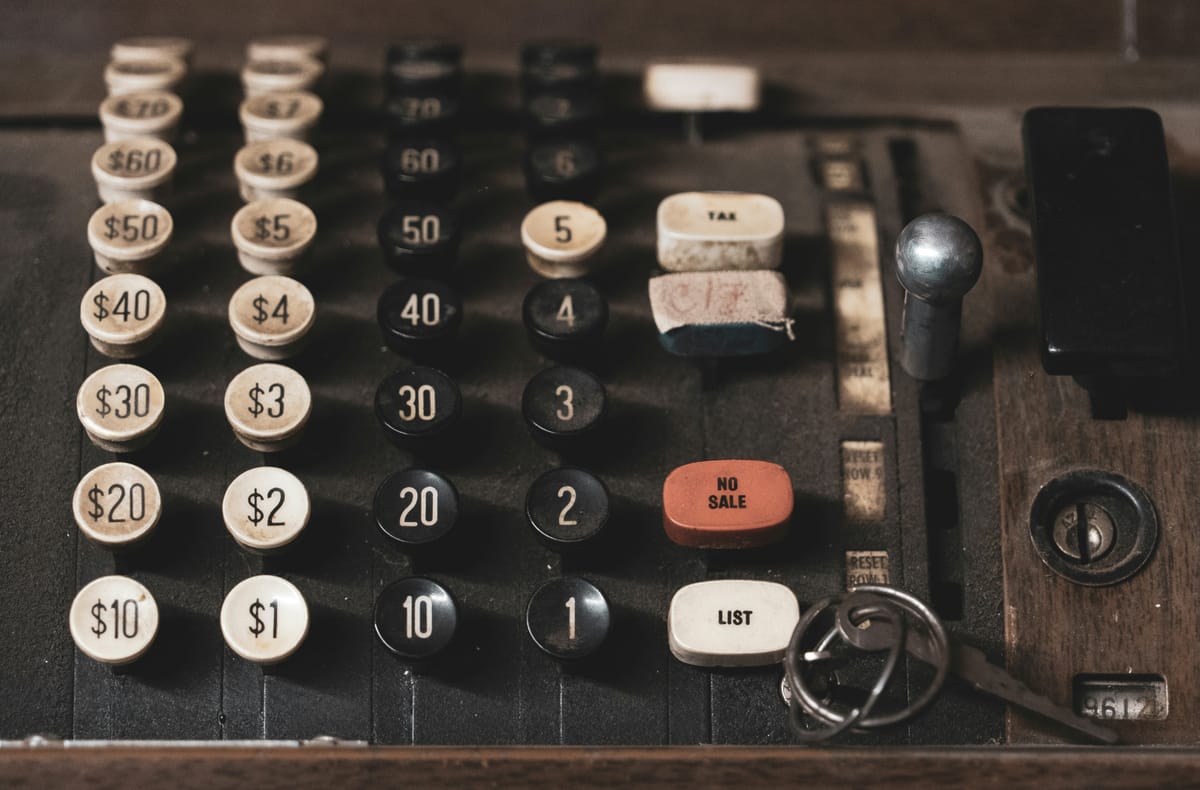1,000 Streams on Spotify – Why You’re Still Not Paid

Introduction
In 2024 Spotify introduced a new payout rule: a track must reach at least 1,000 streams in 12 months before it generates royalties.
For small artists and niche labels, this changes how early releases are monetized. Let’s break down what it means in practice.
What Changed in 2024
Until recently, every single stream generated a payout, no matter how small.
Now, tracks with fewer than 1,000 streams in a 12-month period do not generate direct royalties. The revenue from those sub-1,000 tracks flows into Spotify’s overall payout pool.
Why This Rule Exists
Spotify explains the change with two main reasons:
- Fraud prevention: fake uploads, noise tracks, and bot streams often generated hundreds of micropayments.
- Transaction costs: processing very small payouts often cost more than the payout itself.
The result: higher thresholds before royalties move.
Financial Impact
For independent musicians, this rule has real effects:
- First releases: a song with 800 streams earns visibility but no direct payout.
- Labels with many niche tracks: small amounts across dozens of releases add up to significant sums redirected into the pool.
- Psychological effect: it can feel like early support is “worth nothing”, even though those plays still build visibility.
Concrete Payout Example
For Artists
- Month 1: 800 streams → counted, but no payout (<1,000).
- Month 2: +500 streams = 1,300 total.
- The 1,000-stream threshold is crossed.
- Only the 300 streams above the threshold generate royalties.
- Result: Of 1,300 actual streams, only 300 are paid. The early traction builds visibility but produces no direct income.*
For Labels
- Scenario: A catalog of 500 releases.
- Many tracks sit between 200–800 streams/year.
- Before 2024: even small amounts (e.g. 500 streams) were monetized, adding up across the back catalog.
- Now: only tracks with >1,000 streams in 12 months qualify.
- If just 50 tracks pass the threshold, payouts come only from those.
- The other 450 tracks—despite generating >200,000 combined streams—bring zero revenue.*
Conclusion:
The rule shifts streaming income away from the “long tail” of niche tracks.
For artists, the first months of promotion often feel wasted until the 1,000 mark is hit.
For labels, large back catalogs lose their steady trickle of micropayments and become dead capital unless songs are actively pushed over the threshold.
How to Work With It
- Promote smarter: focus on concentrated campaigns that push tracks past the 1,000-stream mark.
- Diversify platforms: Apple Music and Tidal do not apply the same threshold.
- Set expectations: streams under 1,000 still matter for reach, playlist traction, and long-term growth—even if they don’t bring immediate payout.
Closing Thought
The new rule doesn’t make Spotify irrelevant.
It just means artists need to understand that the first 1,000 streams are about exposure, not income.
Knowing this helps set realistic expectations—and build smarter release strategies.
FAQ: Spotify’s 1,000-Stream Rule (2024–2025)
1. What exactly changed?
As of April 2024, a track must have ≥ 1,000 streams in the previous 12 months to be included in Spotify’s recorded-music royalty pool.
2. When do payouts start—are earlier months paid retroactively once I pass 1,000?
Royalties start the first month your track is eligible. Streams from prior months (when the track was ineligible) are not included. Example: if Month 1 = 750 streams and Month 2 = 500, the track becomes eligible in Month 2 and you’re paid for that month’s 500—not Month 1’s 750.
3. Is the 1,000-stream threshold global or per country?
It’s global, measured across all territories in the previous rolling 12 months.
4. Do I also need a minimum number of unique listeners?
Yes—Spotify requires a minimum (undisclosed) number of unique listeners so a handful of users can’t game eligibility. Spotify doesn’t publish the number, but distributors confirm it exists.
5. Does this rule affect publishing royalties (songwriters)?
No. The 1,000-stream threshold applies to recorded-music royalties (masters). Publishing is a separate pipeline.
6. How many tracks are impacted by this threshold in practice?
Luminate (2023) reported 158.6 million tracks on streaming services got ≤ 1,000 plays in the year—~86% of the catalog. That’s the long tail you’re planning against.
7. What happens if my track crosses 1,000, then drops again later?
Eligibility is dynamic. A track can go eligible → ineligible → eligible depending on its trailing 12-month stream count.
8. What about “functional noise” (white noise, rain, ASMR)?
Two changes rolled out in early 2024:
- Minimum length to earn royalties = 2 minutes (was 30 seconds).
- Spotify aims to value noise streams at a fraction of music streams (subject to licensing deals).
9. What if Spotify flags artificial streaming on my track?
When artificial streaming is detected, Spotify charges labels/distributors a €/$10 per-track (per month) penalty; distributors usually pass this through to the artist under their terms.
10. Is Spotify “keeping” the money from sub-1,000 tracks?
Spotify says the money is reallocated within the streamshare pool to eligible tracks; it isn’t kept as profit. MBW reported Spotify expected around $40m/year to shift under this policy.
11. So are the first 1,000 streams “worth nothing”?
They don’t generate recorded-royalty payouts until eligibility, but they do feed discovery systems and can help you reach eligibility faster (and unlock visibility once eligible). The key is concentrating promotion to cross 1,000 within the same 12-month window.
12. What should small artists/labels do differently now?
- Front-load promotion to push a track past 1,000 in its first months.
- Avoid low-quality promo that risks artificial-stream flags.
- Track territory and listener data (sudden anomalies = investigate).
- Focus energy on tracks with real momentum rather than spreading resources thinly.
Sources
- Spotify Support: Track monetization eligibility (effective April 2024)
- Spotify for Artists Blog: Modernizing our royalty system
- Music Business Worldwide: How the 1,000-stream policy works
- Luminate (via MBW): 158.6M tracks got ≤ 1,000 plays in 2023
- TuneCore: Artificial Streaming Policy
- FUGA: Fraud & artificial streaming policy
- Spotify: Artificial Streaming
- Pitchfork: Spotify to devalue functional noise streams


Want to dive deeper into Spotify’s rules, payouts, and strategies?
Browse all related guides here → Spotify Insights & Guides
“If you’re looking for a reliable way to distribute your music to Major Platforms , NexaTunes offers direct distribution with transparent terms. Learn more here → NexaTunes-Distribution”
Get in touch for more information using our livechat


